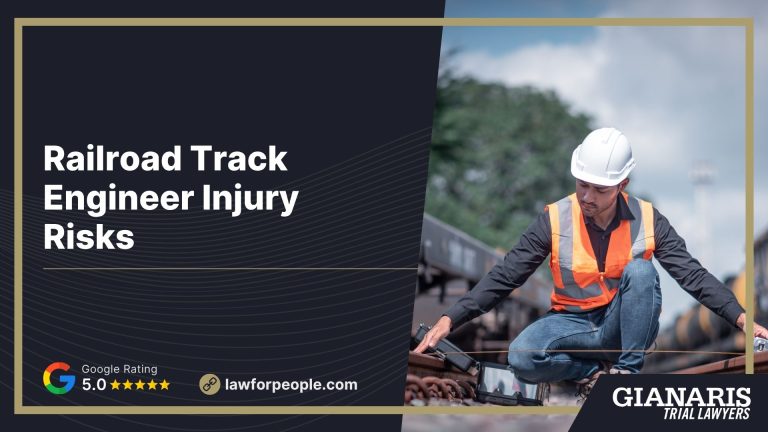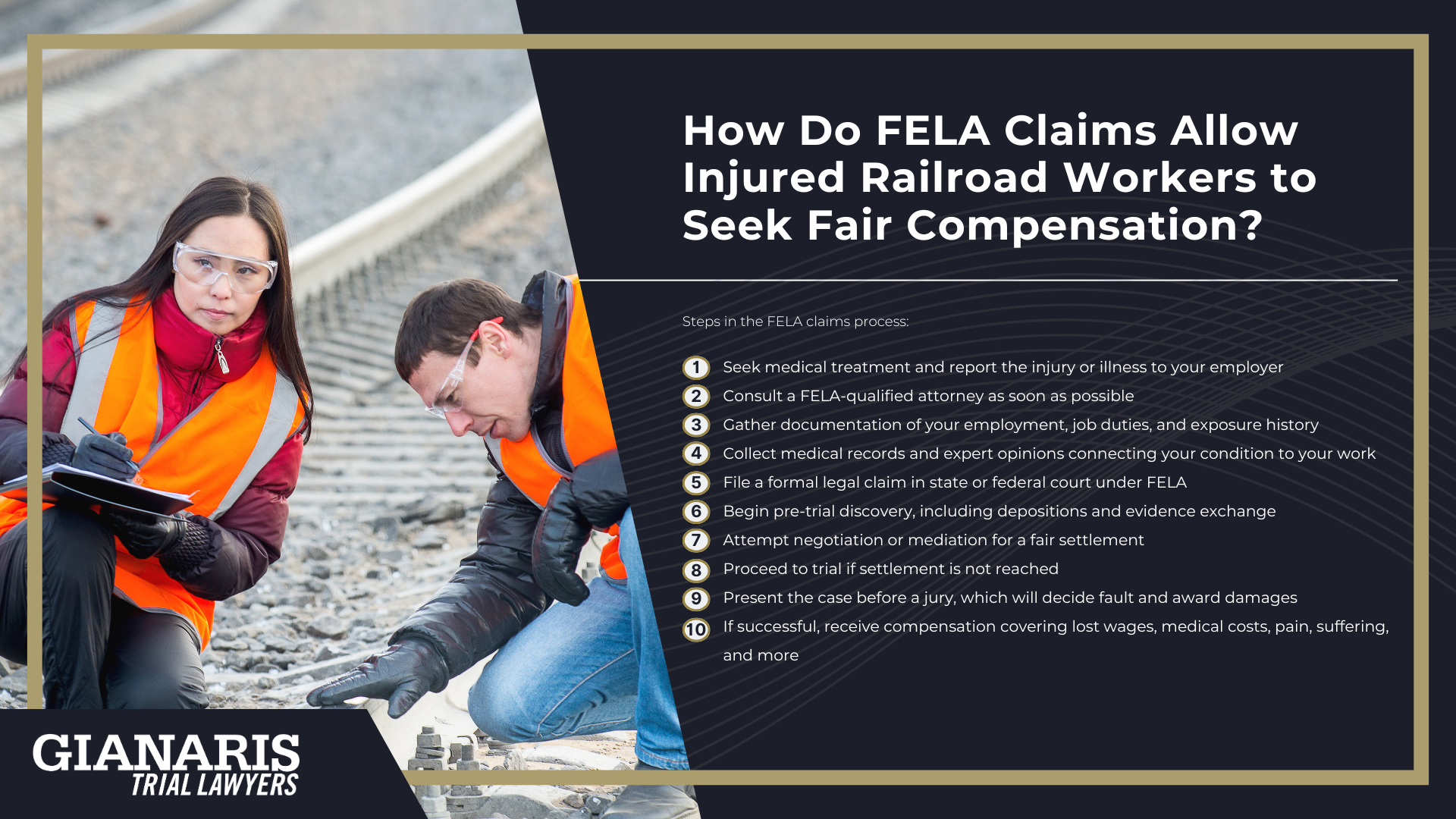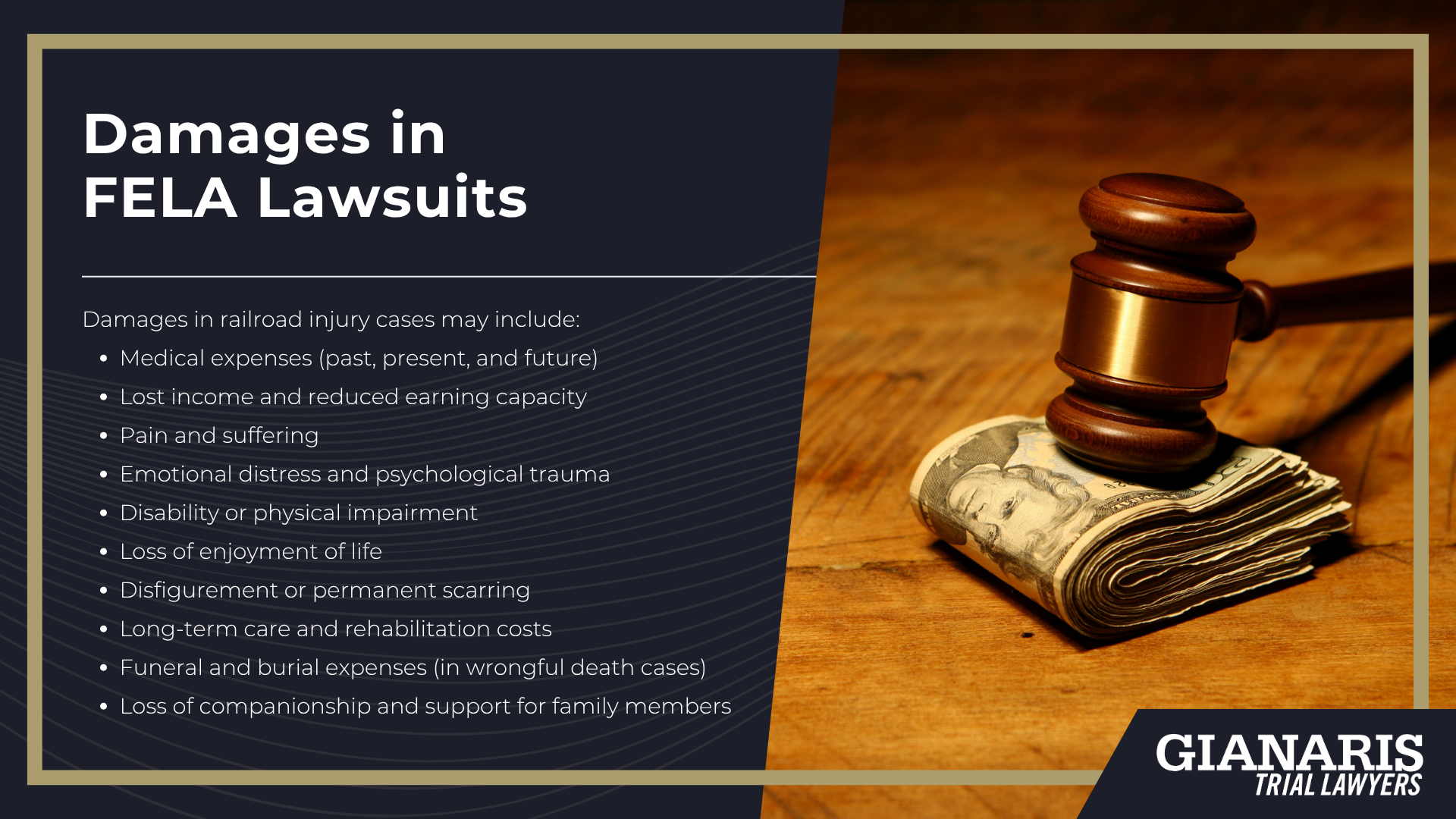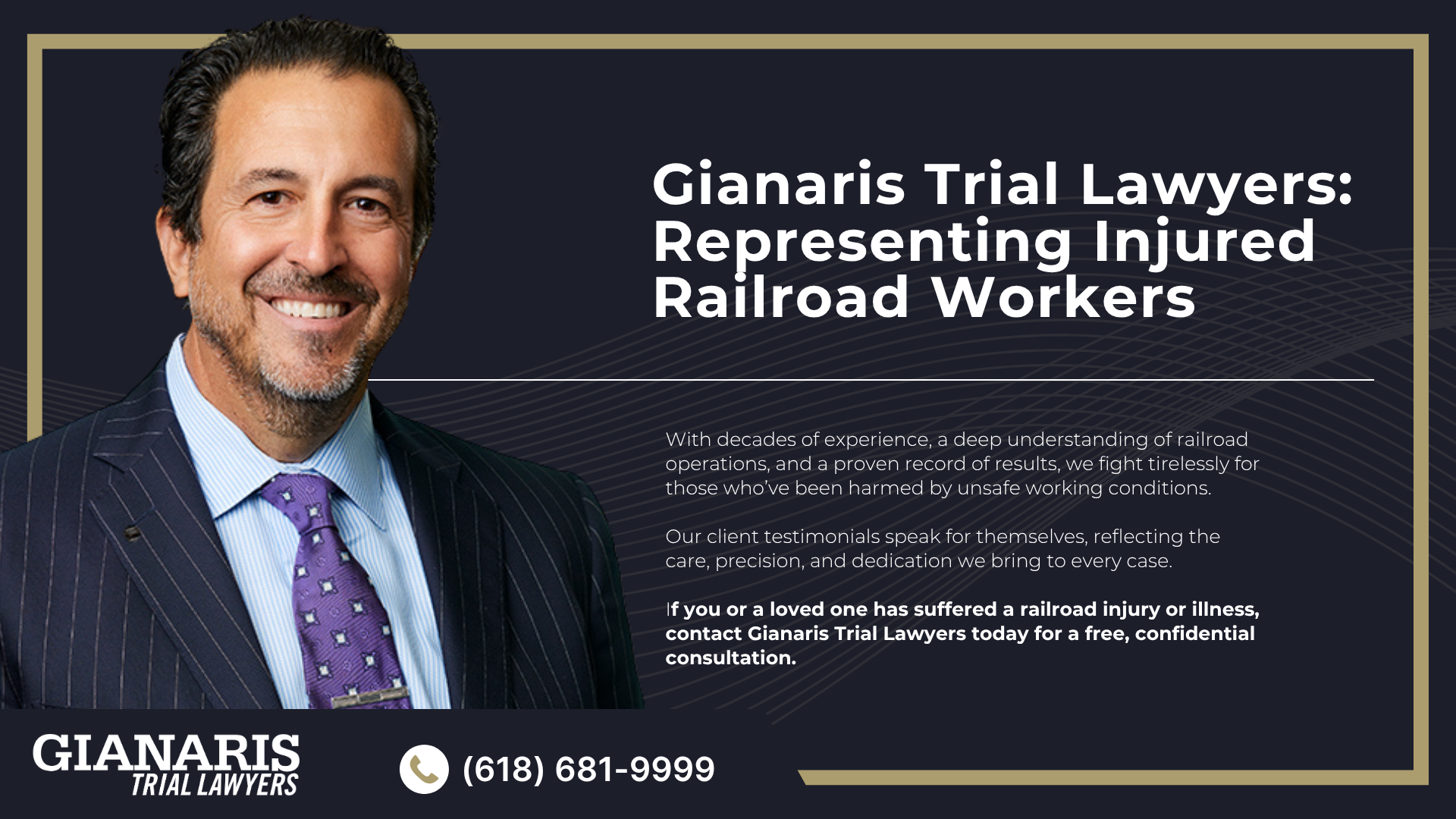Railroad track engineers are regularly exposed to hazardous working conditions that can cause both immediate physical injuries and long-term health complications.
Whether maintaining rail lines, operating heavy equipment, or working near active tracks, these workers perform duties that constantly place them in high-risk environments.
The Federal Railroad Administration has long recognized the dangers involved in track work, from high-impact accidents to toxic exposure.
When proper precautions are not taken, injured employees may suffer permanent harm, or in tragic cases, be killed on the job.
These injuries and illnesses can affect a worker’s lifelong ability to earn a living, cover medical expenses, or support their family.
A single violation of a safety statute or failure to provide access to protective gear may leave the railroad liable under FELA for the damages caused.
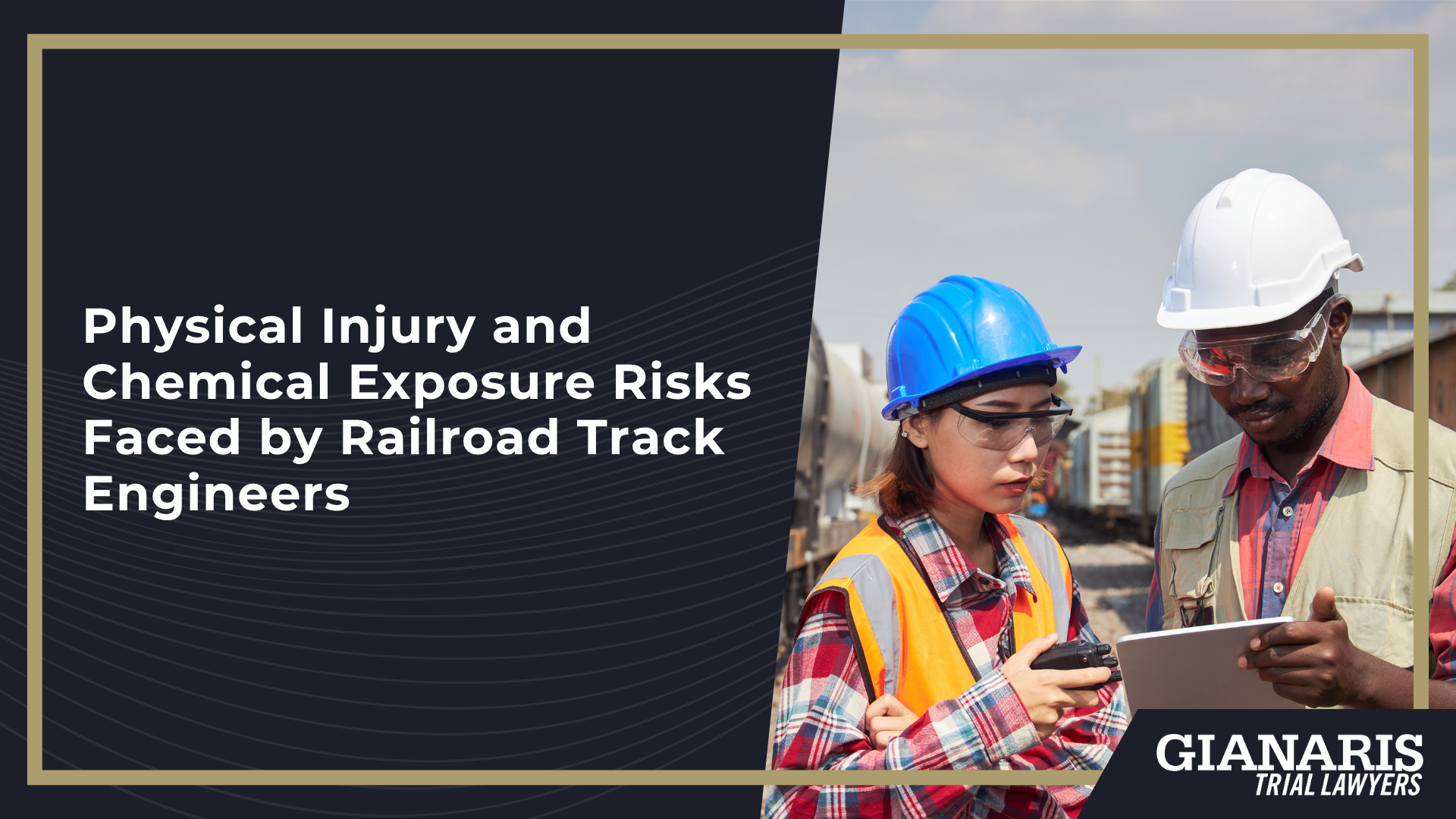
In some cases, a negligent railroad company may have ignored repeated warnings about unsafe conditions or defective equipment.
FELA allows injured track engineers to pursue compensation not just for immediate injuries, but also for future losses in pay, health, and quality of life.
At Gianaris Trial Lawyers, we understand the unique risks track engineers face in the field and stand ready to help those harmed by unsafe conditions seek justice.
Physical Injury Risks for Railroad Track Engineers
Track engineers are required to perform physically demanding tasks in unpredictable and often hazardous outdoor environments.
Their work involves lifting heavy materials, operating large machinery, walking on uneven terrain, and working near high-speed trains: conditions that frequently lead to accidents and serious injuries.
Even with safety protocols in place, railroad employers often fail to provide adequate protections, training, or staffing, increasing the likelihood of preventable harm.
At Gianaris Trial Lawyers, we understand how the daily duties of track engineers (aligning rails, installing switches, replacing ties, and managing jobsite equipment) can lead to devastating physical injuries.
When workers are injured due to unsafe conditions or employer negligence, they may be entitled to compensation under FELA.
In the most severe cases, these injuries can result in permanent disability or death, especially when safety warnings are ignored.
We help injured track engineers recover damages for medical care, lost income, and the long-term impact these injuries can have on their lives and families.
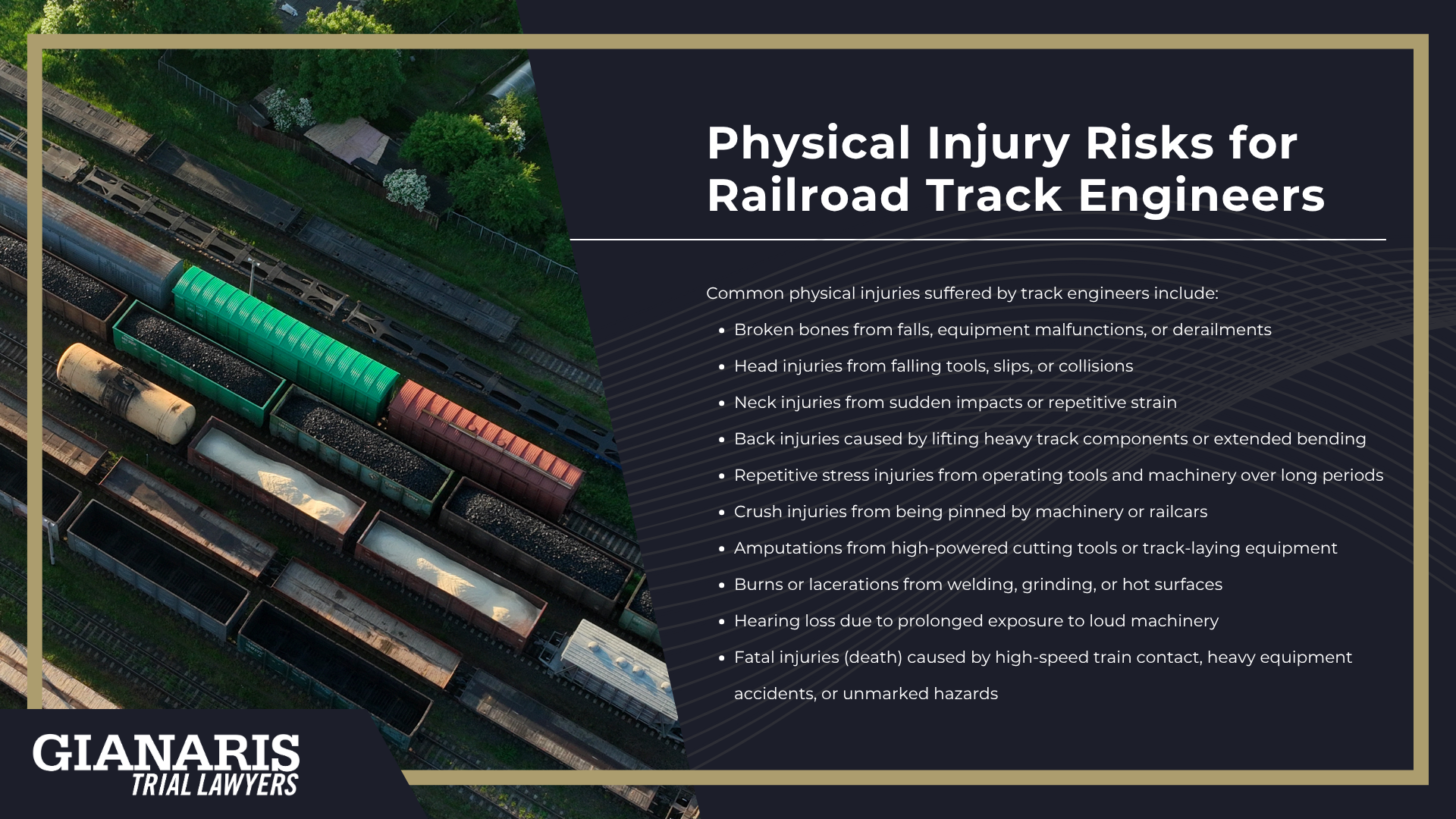
Common physical injuries suffered by track engineers include:
- Broken bones from falls, equipment malfunctions, or derailments
- Head injuries from falling tools, slips, or collisions
- Neck injuries from sudden impacts or repetitive strain
- Back injuries caused by lifting heavy track components or extended bending
- Repetitive stress injuries from operating tools and machinery over long periods
- Crush injuries from being pinned by machinery or railcars
- Amputations from high-powered cutting tools or track-laying equipment
- Burns or lacerations from welding, grinding, or hot surfaces
- Hearing loss due to prolonged exposure to loud machinery
- Fatal injuries (death) caused by high-speed train contact, heavy equipment accidents, or unmarked hazards
Chemical Exposure Risks for Railroad Track Engineers
In addition to the risk of traumatic accidents, railroad track engineers are often exposed to toxic chemicals during routine maintenance, repair, and construction work.
Whether treating railroad ties, working near cars carrying hazardous materials, or operating alongside idling locomotives, these workers face daily contact with substances that can cause serious long-term illness.
Exposure may occur through inhalation, skin contact, or residual contamination of tools, clothing, and worksites.
Over time, this chemical exposure can severely hurt a worker’s health, leading to respiratory issues, blood disorders, and various cancers.
These risks are often overlooked by employers, and protective measures may be outdated, inconsistently enforced, or completely absent.
Gianaris Trial Lawyers has represented track engineers suffering from these exact types of exposure and knows how to connect the job conditions to the resulting health problems.
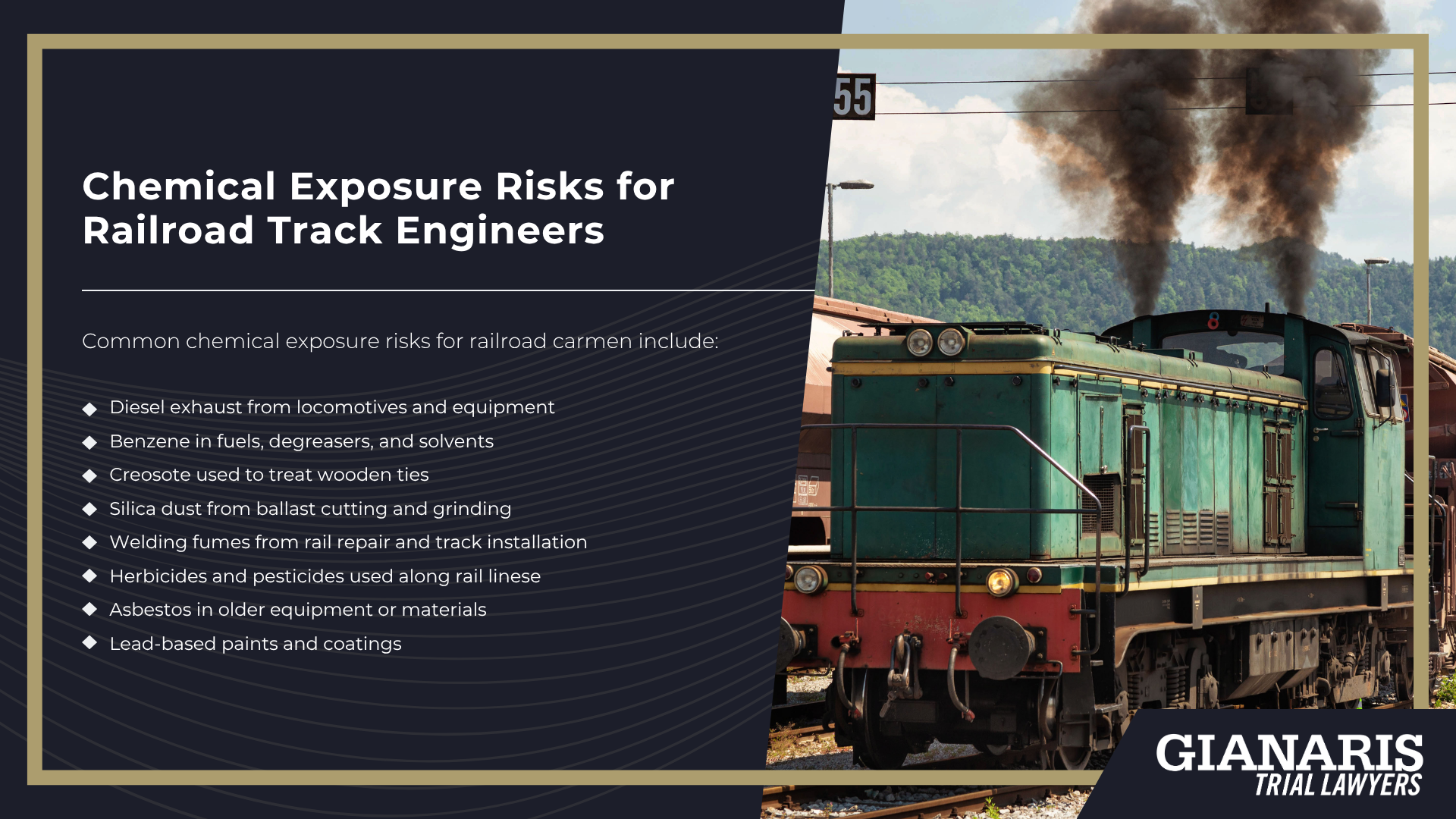
Types of chemical exposure and resultant illnesses suffered by track engineers may include:
- Diesel exhaust from locomotives and equipment — linked to lung cancer, COPD, and chronic bronchitis
- Benzene in fuels, degreasers, and solvents — linked to leukemia, non-Hodgkin’s lymphoma, and aplastic anemia
- Creosote used to treat wooden ties — associated with skin cancer and chemical burns
- Silica dust from ballast cutting and grinding — linked to silicosis, lung disease, and pulmonary fibrosis
- Welding fumes from rail repair and track installation — associated with respiratory irritation and neurological conditions
- Herbicides and pesticides used along rail lines — linked to non-Hodgkin’s lymphoma and Parkinson’s disease
- Asbestos in older equipment or materials — causes mesothelioma, lung cancer, and asbestosis
- Lead-based paints and coatings — linked to kidney damage, nerve disorders, and reproductive harm

